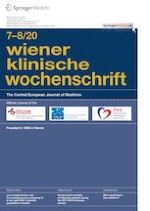In previous papers [
8‐
10] increased frequencies of cellular abnormalities were demonstrated and symptoms of intoxication with recent exposure to pesticides were reported; however, a reduced number of children was observed in conventional farmworkers that could not be explained by recent exposures. In this study the aim was to investigate better ways to describe pesticide exposure that might be relevant for that endpoint. By repeatedly causing symptoms of intoxication [
9] ongoing pesticide exposure could interfere with sexual behavior and thus reduce the number of children with increasing duration of exposure. Through endocrine disrupting effects that are likely most effective during earlier developmental stages, e.g. before or during puberty [
28], a one-time or short-time exposure could have a lasting effect on male fertility. In the former case number of years of exposure would be the exposure metric of choice, in the latter case it would be age at first exposure, possibly in relation to puberty. Unfortunately, age is per se a strong predictor of the number of children as well as a predictor of life-long duration of exposure. Controlling correctly for such a strong confounder, especially in the face of a small sample size, is remarkably challenging. This paper also explores ways to solve this problem. Overall the findings indicate that pesticide exposure before the age of about 20 years is an independent predictor of fewer children. This is in accordance with previous experimental [
18,
22] and epidemiological [
13‐
17,
19,
29] evidence, even though rats might be even more sensitive than humans [
30]. The study did not collect data on types of pesticides used by the participants possibly decades ago. Even pesticides currently in use were so diverse [
10] that analysis per type of pesticide was not possible; however, a rough and qualitative list of pesticides without claim for completeness is given: paraquat, glyphosate, pyrethroids, dithiocarbamates, malathion, methamidophos, carbamates, 2,4‑D. For more details refer to the previous study [
10]. The study cannot point out a single causal agent, which is a clear limitation. Exposure to pesticides early in life could even be a proxy for e.g. childhood labor and hence for poor socioeconomic conditions; however, better socioeconomic conditions are generally linked to fewer children [
31,
32] but at least in reports from Italian agricultural groups an inverse association was noted [
33]. In the present data set, highest completed education is the only reliable marker of socioeconomic status. Age is negatively correlated with education (R = −0.4): the only person with a tertiary/university degree was 32 years old. This is also the average age of 18 participants with a secondary school (range: 15–82 years). The same range, but with an average age of 42 years, was found in the 44 persons with compulsory school only. The 8 persons with no schooling at all were on average 49 years old (range: 33–86 years). This is likely due to a birth cohort effect: those born earlier lived in an era when access to schools was less widespread. Although controls were on average older than pesticide exposed workers the education of the two groups did not significantly differ. Among all participants the number of children decreased by 0.3 for each additional step in education (
p = 0.016) but this association was reversed when controlled for age squared (+0.28 children,
p = 0.042). Hence poor education that might also be signified by early onset of work could be a possible explanation of the impact of early exposure but the reverse could also be true: early pesticide exposure may be the cause of the association between education and children. Unfortunately, information on age at first work in general is lacking. Therefore, it can only be stated that early work (before about 20 years of age) in conventional coffee farming is associated with fewer children. Exposure to endocrine disrupting pesticides is a plausible but not the only explanation of that finding. Needless to say, current age was treated as an independent factor and a confounder of the association between pesticides and children. As explained in the introduction a causal link between exposure and age cannot be ruled out. In that case controlling for age would not be justified because age then would not be a confounder but an intermediate.
